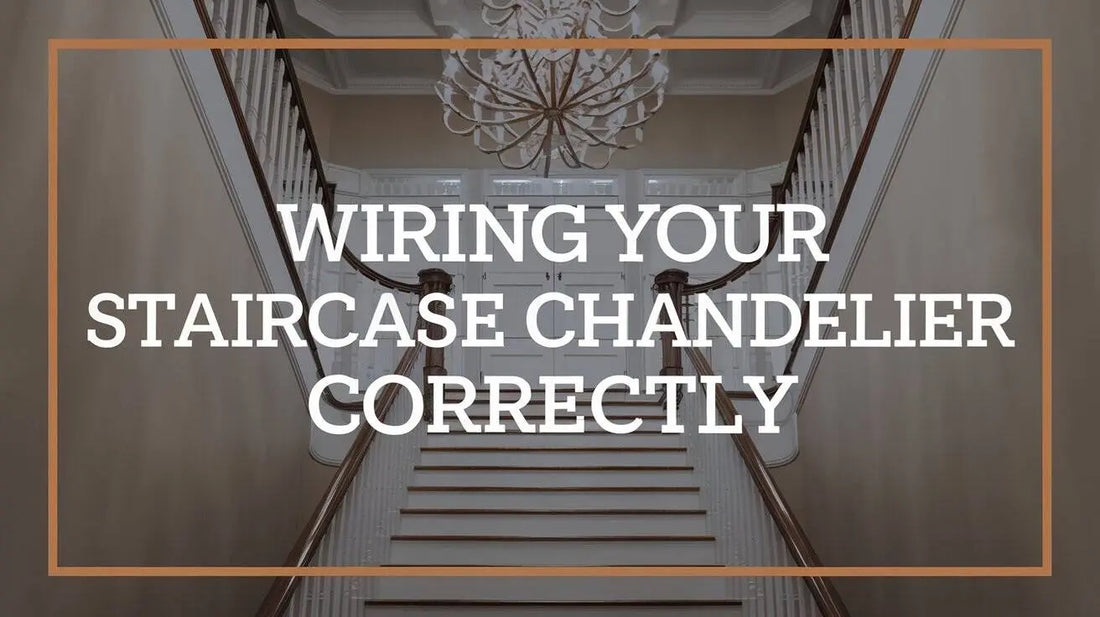Putting a chandelier in your staircase can really make your home shine. But it's not just about picking a pretty light - you need to think about how to wire it safely too. Let's talk about what you need to know to get your staircase chandelier set up right.
Key Takeaways
- Professional installation is recommended for safety and compliance
- Proper wiring and grounding are crucial for chandelier functionality
- Consider the weight and size of the chandelier for appropriate support
- LED options offer energy efficiency and modern lighting control
- Regular maintenance ensures longevity and continued safe operation
The Basics of Staircase Chandelier Wiring
First things first - most chandeliers use regular 120V power, just like other lights in your house. But because they're often bigger and heavier than normal lights, you need to be extra careful when wiring them up. Here are some key things to keep in mind:
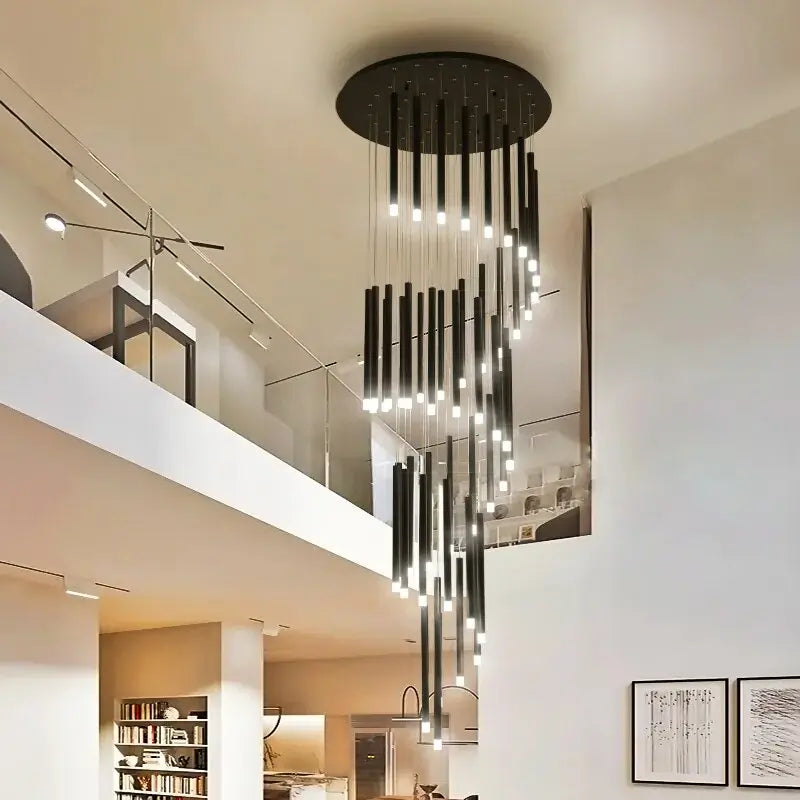
Key Points for Staircase Chandelier Wiring
- Professional installation recommended (65% need an electrician)
- Chandeliers usually run on 120V AC power
- Proper grounding is crucial for 99.9% of installations
- LED chandeliers use 75% less energy than old-style ones
- Use 14-gauge wire for lights up to 15 amps, 12-gauge for 20 amps
- 70% of staircase chandeliers need their own circuit
If you're thinking about getting a staircase chandelier, you might want to check out some staircase chandelier options to get ideas. But remember, no matter how good it looks, safety comes first!
Getting the Electrical Stuff Right
When you're setting up a staircase chandelier, you need to think about more than just how it looks. The electrical parts are super important. Here's what you need to know:
- Wire size matters: Use 14-gauge wire for lights up to 15 amps, and 12-gauge for 20 amps.
- Most staircase chandeliers (about 70%) need their own circuit. This means they don't share power with other lights or outlets.
- If your staircase is near a bathroom or somewhere that might get damp, you'll need special GFCI protection to prevent shocks.
- Consider the voltage drop, especially for long wire runs. This might require thicker wires to maintain proper voltage at the fixture.
- Ensure the junction box is rated for the weight of your chandelier. Most chandeliers require a box rated for at least 50 pounds.
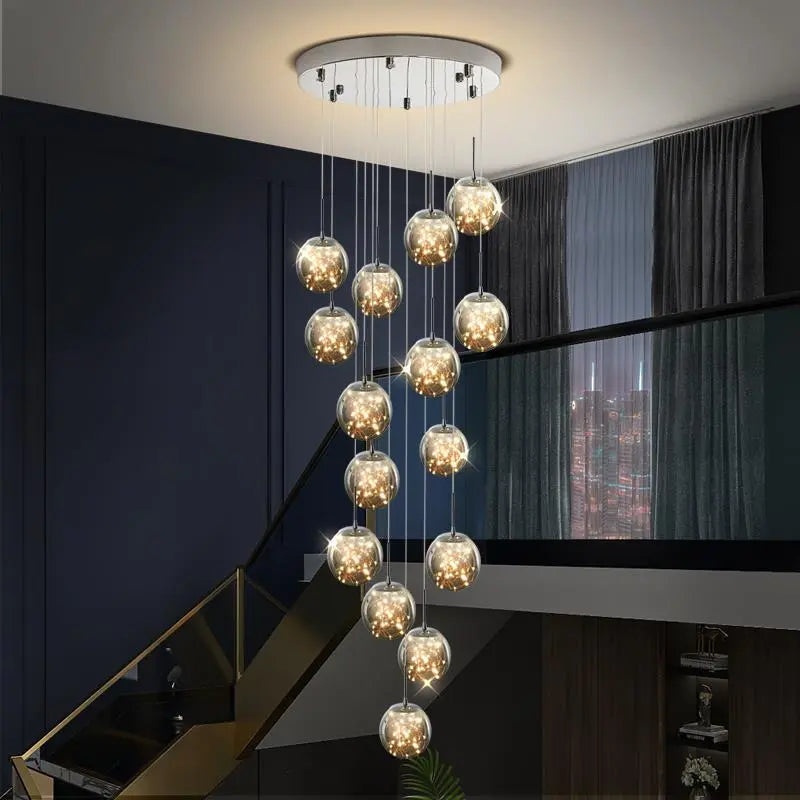
If all this sounds a bit complicated, don't worry. That's why most people get a professional to help. But it's good to know what's going on, even if you're not doing it yourself. And if you want to see some cool modern designs, you can take a look at contemporary chandelier styles.
Staying Safe When Installing Your Chandelier
Safety isn't just about the wiring - it's also about how the chandelier is hung up. Here are some important safety tips:
- Make sure the chandelier is properly grounded. This helps prevent electric shocks.
- Use a junction box that can hold at least 50 pounds. Most chandeliers are heavy!
- If your staircase gets humid (like if it's near a bathroom), you might need special moisture-proof wiring.
- Always turn off the power at the circuit breaker before starting any electrical work.
- Use a voltage tester to double-check that the power is off before touching any wires.
- Consider installing a support brace between ceiling joists for extra stability, especially for heavier chandeliers.
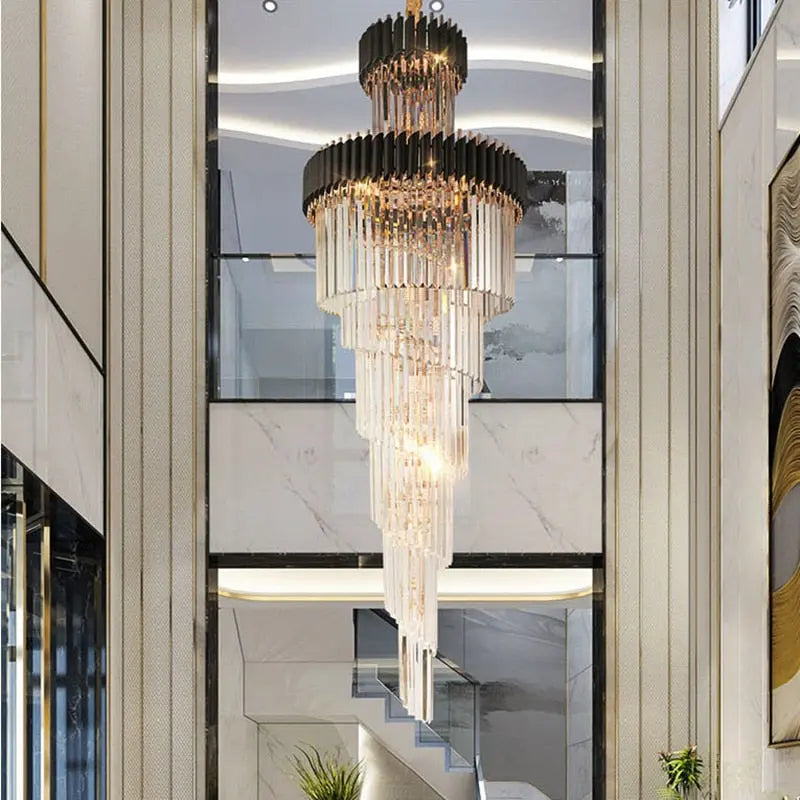
Crystal chandeliers can be really pretty, but they're often heavier than other types. If you like the sparkly look, you can see some crystal chandelier options here. Just remember, the heavier the chandelier, the more careful you need to be with installation.
Different Types of Chandeliers and Their Wiring Needs
Not all chandeliers are the same when it comes to wiring. Let's look at a few different types:
- Crystal chandeliers: These are often heavy and might need extra support.
- LED chandeliers: These use less energy, but might need special dimmers.
- Smart chandeliers: These can be controlled with your phone, but the wiring can be more complicated.
- Multi-tier chandeliers: These may require additional support and careful balancing during installation.
- Adjustable chandeliers: These often have more complex wiring to allow for height adjustments.
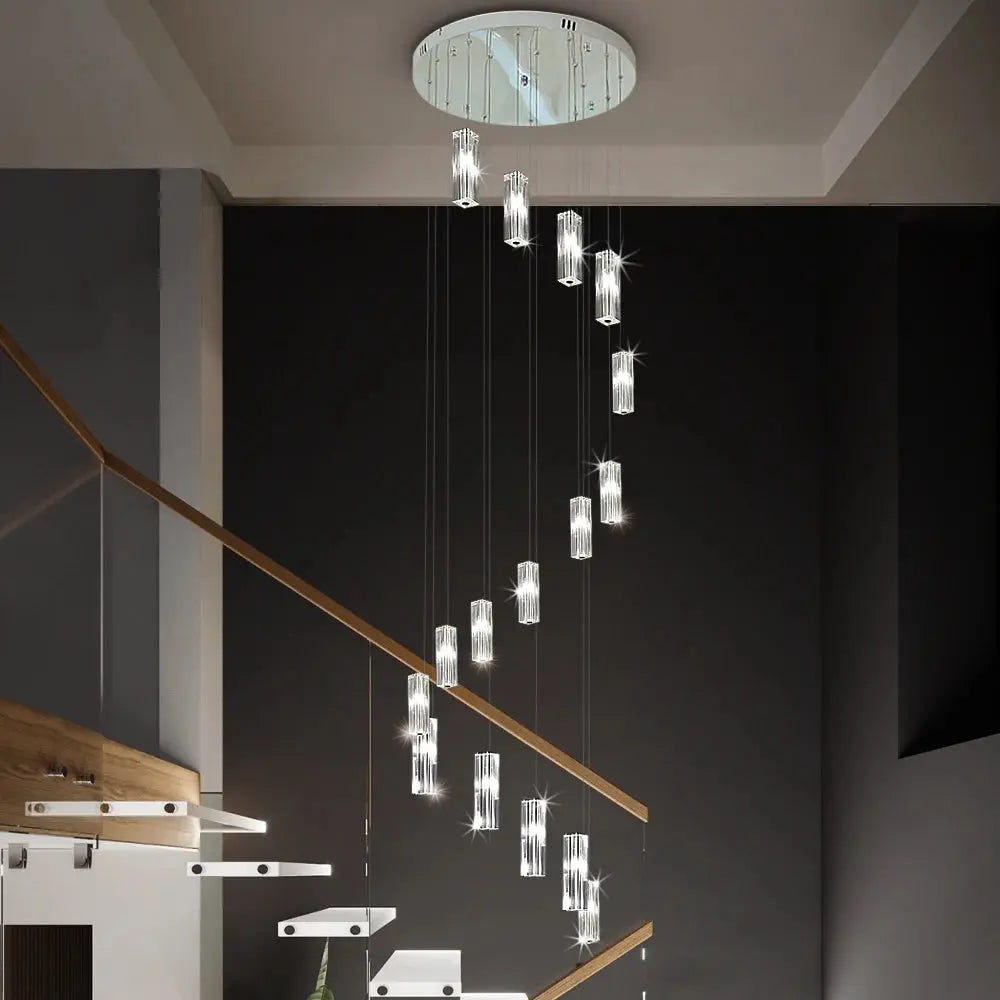
No matter what type you choose, make sure it fits your staircase well. You can look at different staircase lighting ideas here to get inspired.
Tricky Technical Stuff
There's some more complicated stuff to think about when wiring a staircase chandelier:
- Voltage drop: If your chandelier is far from the power source, you might need thicker wires.
- Dimmer switches: About 78% of new chandeliers can use dimmers, but you need to make sure they're compatible.
- Multi-story houses: You might need special 3-way or 4-way switches so you can turn the light on and off from different floors.
- Load calculation: Ensure your electrical panel can handle the additional load of a large chandelier.
- EMI (Electromagnetic Interference): Some LED drivers can cause interference with other electronics. Look for chandeliers with EMI-reducing features if this is a concern.
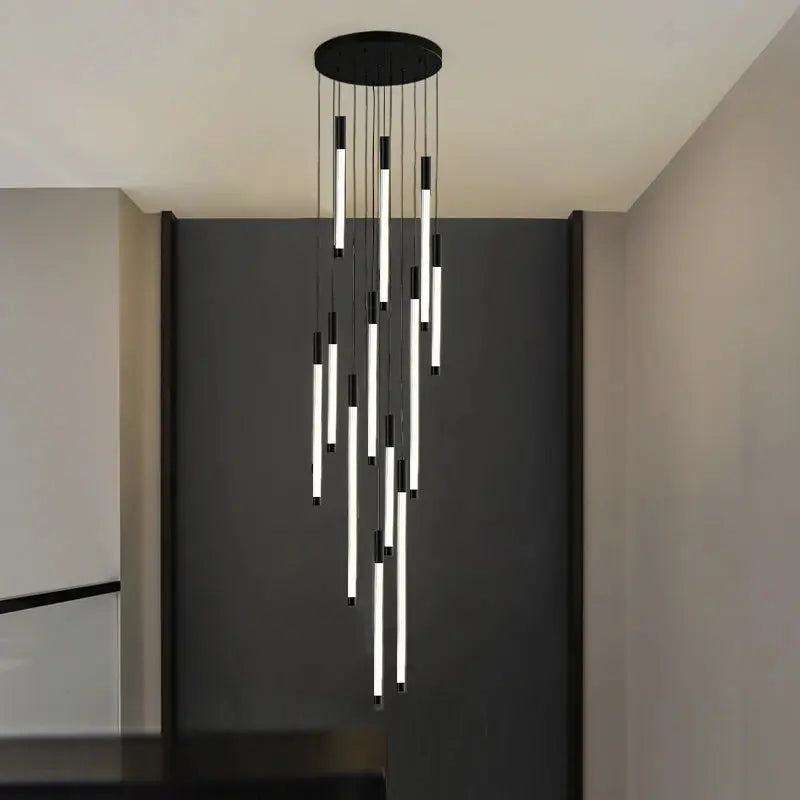
If you want to see all the different styles available, you can browse the full chandelier collection. Just remember, the fancier the chandelier, the more complicated the wiring might be.
How Heavy is Too Heavy?
Chandeliers can be pretty heavy. Most weigh between 20 and 50 pounds. That might not sound like much, but when it's hanging over your stairs, you want to be sure it's secure! Here's what you need to know:
- Check how much weight your ceiling can hold. You might need to add extra support.
- Make sure the mounting bracket and junction box are rated for the weight of your chandelier.
- Different materials weigh different amounts. A big crystal chandelier will be much heavier than a simple metal one.
- Consider the dynamic load - a chandelier might sway slightly, adding stress to the mounting point.
- For chandeliers over 50 pounds, consult a structural engineer to ensure your ceiling can support the weight.
Not sure what size chandelier you need? You can learn how to choose the right size staircase chandelier here.
Should You DIY or Call a Pro?
Now for the big question - should you try to install the chandelier yourself, or get a professional to do it? Here's what to think about:
- If you're not comfortable with electrical work, it's always safer to call a pro.
- DIY can save money, but mistakes can be dangerous and expensive to fix.
- Professional installation usually costs more upfront, but can save you headaches (and potential hazards) in the long run.
- Consider your local regulations - some areas require licensed electricians for chandelier installations.
- Think about the complexity of the installation. Multi-tier or smart chandeliers often require professional expertise.

If you're looking for ideas on how to make your staircase stand out, you can check out some top staircase chandelier designs for modern homes.
Following the Rules
Every area has its own rules about electrical work. Here's why that matters:
- Following local codes keeps you and your home safe.
- You might need permits for big electrical changes.
- Some places require a licensed electrician to do the work.
- Compliance with codes can affect your home insurance and resale value.
- Regular inspections may be required for larger installations.

Wondering why chandeliers are so popular for staircases? You can find out why chandeliers can make a big difference in staircase lighting.
Keeping Your Chandelier Working Well
Once your chandelier is up, you'll want to keep it working well. Here are some tips:
- Clean it regularly to keep it shining bright.
- Check the wires and connections every now and then to make sure everything's still secure.
- If you notice any problems (like flickering or buzzing), get it checked out right away.
- Replace bulbs promptly to avoid overheating or uneven lighting.
- Consider having a professional inspection every few years, especially for complex or heavy chandeliers.
Want more ideas for making your staircase look amazing? You can get inspired with these staircase chandelier ideas for your home.
Wrapping It Up
Putting a chandelier in your staircase can make your home look really special. But it's important to do it safely. Remember these key points:
- Make sure the wiring is done right - get help if you're not sure.
- Choose a chandelier that's the right size and weight for your space.
- Follow all the safety rules and local codes.
- Take good care of your chandelier to keep it looking great.
- Consider energy efficiency and modern control options for long-term benefits.
With the right planning and care, your staircase chandelier can be both safe and beautiful. Ready to find your perfect staircase chandelier? You can shop for staircase chandeliers here.

